Contribute information about spots
Add Spot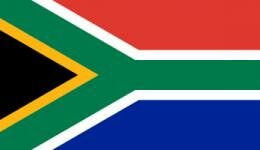
Kitesurfing in South Africa
From the vibrant nightlife of Cape Town to the tranquility of the country's national parks, South Africa offers a once-in-a-lifetime adventure where amazing vegetation and wildlife reign supreme. In addition, there is also plenty to do for those who like to enjoy the seaside, with 200 kilometers of sandy coastline along the road that include beaches, lagoons, and bays—andnd then there is the chance to see whales, dolphins, white sharks, and African penguins from the shore.
HIGHLIGHTS OF SOUTH AFRICA
THE ‘’SARDINE RUN’’
The sardine migration—one of the largest marine events in the world—takes place in South African waters when the temperature decreases during the months of May and July. an estimated 430million sardinesmove along the east coast of South Africa forming huge shoals (7 to 15 km long and 4 km wide). Divers, fishermen, and curious people from all over the world come to witness this wonder of nature.
CAPE TOWN
Cape Town is one of South Africa's most cosmopolitan and vibrant cities. The city itself is nestled between the Atlantic Ocean and Table Mountain, one of the seven natural wonders of the world. The stunning scenery, great food, great weather, and fascinating culture of the city will allow you to feel completely free.
SAFARIS
South Africa is one of the best safari destinations in the world, offering accessible parks and reserves where the natural flow of nature is one of the least disturbed in the world. Wildlife watching is one of the most spectacular events. A must-see is the "Big African Five"—elephant, buffalo, leopard, lion, and rhino.
SWIM WITH THE SHARKS
The marine life that exists in the surrounding waters of South Africa is enormous. One of the most adrenaline-pumping activities that you can have is diving with the great white sharks. In Gansbaai, Mossel Bay, and Durban there are several companies dedicated to taking tourists to swim with white sharks, yet, you will be inside a cage, which makes the experience completely safe and one of a kind.
KITESURFING IN SOUTH AFRICA
South Africa is a great destination for water sports and activities such as kitesurfing in a stunning natural environment. The spot is known for having a mix of unbeatable conditions of both waves and flat water and winds practically guaranteed in the high summer season. Each place has its own character, so your trip is not only an unforgettable kitesurfing experience but also an unforgettable personal one.
Professional kitesurfers fall in love with South Africa as it offers the strongest winds and huge waves, which are perfect for big air and freestyle disciplines.
It is one of the best regions in the world to practice this sport thanks to its long windy season during European winter (its summer). Add to that, beaches and endless conditions to suit both wave surfing, freestyle riding, and everything in between.WHEN IS THE BEST TIME TO KITESURF IN SOUTH AFRICA?
Being in the southern hemisphere, the seasons are the opposite of those in Europe, meaning the summer in South Africa is during the months of winter in Europe.
The wind blows almost all year round, but the conditions during the southern summer are more favorable, which is why kitesurfers typically flock to Cape Town's beaches from October to March as the wind blows steadily at about 20 knots between these months. Those are the best dates to organize a visit. However, the best winds blow from November to the end of February, which is strong and may reach 30 knots easily.
During the months of January and February it is very common to see the pros preparing for their wave season here.
Unfortunately, the water is always cold in Cape Town, so a wetsuit is needed for kitesurfers in any season.
WHAT ARE THE BEST KITESURF SPOTS IN SOUTH AFRICA?
Big Bay, Cape Town

Photo: Coastline Kitesurfing
Big Bay, in the Western Cape, situated between Melkbosstrand and Bloubergstrand, is a long stretch of beach that features picturesque views of Table Mountain and has a fairly frequent swell. Waves and can appear at any time of the year, making it one of South Africa's premier kitesurfing beaches.
Bloubergstrand

Photo: High Five Kitesurf School
Bloubergstrand is another great spot for those who already practice kitesurfing. North of Cape Town, the town of Bloubergstrand is the place to be for all kitesurfers who love freeride, waves, and big air. Downwinds are also very popular along the coast. It is the exact beach where Red Bull King of the Air takes place annually.
Langebaan

Photo: C-Kite-Langebaan
An hour's drive from Bloubergstrand, the calm Langebaan lagoon is the best choice for beginner kitesurfers. The wind picks up there around midday, creating perfect conditions for kites. The lagoon is a sanctuary and is part of the West Coast National Park. Equipment is available for rent at the kite schools on the spot.
ABOUT THE COUNTRY
A Brief History of South Africa
The history of South Africa is present in every corner of Cape Town, which was the place where the first European settlers set foot in the country. The first Dutch settlers arrived in Cape Town in 1652, more than a century and a half after the Portuguese navigator Vasco da Gama rounded the Cape of Good Hope. Dutch merchants landed on the southern tip of what is now the Republic of South Africa and established Cape Town, a transit point for the spice trade on the road between the Netherlands and the Far East. When the British seized the Cape of Good Hope in 1806, many Dutch colonists headed north to set up their own republics. The discovery of diamonds and gold between 1867 and 1886 encouraged immigration and intensified the subjugation of indigenous people. This marked the beginning of the slave trade. South Africa began its path to independence in 1934. One of the most prominent political figures of the 20th century, Nelson Mandela was released from prison on February 11, 1990, after nearly three decades of imprisonment for opposing the white minority regime. Four years later, Mandela became the country's President (the first black President of the country) and set his country on a path of national reconciliation to restore the dignity of the Black majority.Later on, AIDS, unemployment, street violence and economic problems have made this territory, ravaged by its tragic past, a country with serious social difficulties. Today, supported by the diamond trade and the impressive development of technology, South Africa is beginning to have its own voice.
Other Attractions in South Africa
Despite discovering breathtaking natural landscapes, seeing big cats and all kinds of animals in the wild, and visiting magnificent national parks, a must is to get to know the atmospheric Cape Town and Johannesburg.
Cape Town is by far the most charming city in South Africa. One of its main attractions is the spectacular natural environment that surrounds it. For instance, Table Mountain is considered one of the Seven Natural Wonders of the world. This mountain is known as one of the oldest on the planet and from its summit, you will have the best views of the city and the coast.
Meanwhile, Johannesburg is the largest and most populous city in South Africa.
The city is very important for the history, politics, and culture of the country. Therefore, if you like history it is highly recommended to visit it, especially places like The Apartheid Museum which tells the history of racial discrimination in South Africa, the Constitutional Court which was the prison where Nelson Mandela and Gandhi were imprisoned, and the Soweto neighborhood where famous South African leader Nelson Mandela lived.
Getting to South Africa
In South Africa, you have several international airports such as in the cities of Durban, Johannesburg, Pretoria, and Cape Town. To these airports, you can arrive from any city in the world. The most common option is to arrive at the O.R. Tambo International Airport in Johannesburg as it is the cheapest on the route (compared to Cape Town which costs a little more). Depending on departure cities, some have direct flights, and for some you will need to make a layover.
Once in South Africa, you can take domestic or low-cost flights.
Another alternative once you arrive at the airport is to move around the country by rental car. You should also take note that in South Africa cars drive on the right side, quite the opposite of most countries where the driver is on the left.
There are also buses that make trips to tourist places as well as buses that go from city to city at very cheap prices.
USEFUL RESOURCES
SIMILAR KITESURFING DESTINATIONS
SPOT
WORLD > AFRICA > SOUTH AFRICA > CAPE TOWN
CAPE TOWN
Cape Town, located in the Western Cape, is the legislative capital of South Africa and the mecca of kitesurfing. Its skyline is unmistakable, with Table Mountain, one of the oldest mountains on the planet, and tons of kites floating in the air.
HIGHLIGHTS
PENGUINS ON THE BEACHESThere are not many places in the world where you can enjoy a paradisiacal beach surrounded by gentle penguins. But in South Africa you can. The only place where they can be seen so closely is at Boulders Beach. Walking along the beach, wandering among the rocks, you can see all sorts of penguin life.
RED BULL KING OF THE AIROne of the most spectacular and radical championships in the kitesurfing world takes place in Cape Town annually, and usually between the months of November and January. It is widely known as the premier large-scale kiteboarding competition, gathering top athletes from around the world where riders are judged on the height of their jumps, variety of tricks, and style.
CAPE TOWN GOURMET FESTIVALAs the name suggests, the main theme of this festival is food. Every May, the festival brings together the best chefs from around the world who demonstrate their incredible cooking skills. Attending the festival, you will be able to try a variety offlavors from different cultures.
GALILEO OPEN-AIR CINEMA
A 200-seat outdoor movie concept with giant screens is located at the heart of a garden in Cape Town under the starry sky. The festival happens every year during the months of March and April and welcomes all movie enthusiasts. There’s a list of different movies to display each day and adapted to all tastes.
KITESURFING IN CAPE TOWN
Cape Town has more than 30 beaches to choose from and an abundance of kitesurfing schools and equipment rentals which makes it easy to pick a suitable spot and hit the waves. And indeed, the sport is enjoying growing popularity, especially after the Red Bull King of the Air moved to Cape Town in 2013 and has been held here ever since. Every year, the best kiters in the world gather to compete and perform extreme jumps. This pure spectacle is noted for its high speeds and breathtaking jumps.
A world-famous spot, admired by the top riders on the planet, Cape Town is, without doubt, a kitesurfing spot for advanced riders who love tough, extreme wind conditions, already have the confidence to ride any spot, and are perfectly at ease with small kites.
The best of Cape Town can be found between the months of November and March when winter arrives in Europe.
Its nightlife is as crazy as the kitesurfers who come here. You will always meet kitesurfing friends from all over the world.
Wind, weather and water
You can enjoy kitesurfing in Cape Town all year round, as long as the wind conditions are right. Although, during the windy summer season, kitesurfing is at its best.
The windy season in Cape Town runs from October to March. The months with the highest percentage of days with strong wind are November, followed by December and January. May, June, and July are the months with the least wind of the year, and besides, the winter season is very strong there.
The wind direction in Cape Town is predominantly South to Southeast, and some days Northwest, but rarely. The former blows very strongly during the windy season from October to March and allows kitesurfing in the majority of the spots. The Northwest wind is not so common and, when it blows, it rarely activates the spots in the Bloubergstrand area.
Regarding temperature, Cape Town has a semi-arid climate. It is warm to hot year-round. From the month of December until March the weather is perfect and there is little rainfall. The average temperature is 28°C during the summer months. Often, in summer, the Cape Doctor wind blows an intense southerly breeze that cools and cleans the air of pollution.
Along the west coast of South Africa flows a cold marine current, called the Benguela Current, which makes the climate dry. The maximum water temperature in Cape Town is 19°C. Comfortable bathing is possible, but a wetsuit is recommended, as you will spend hours in the water kitesurfing.
WHAT ARE THE BEST BEACHES FOR KITESURFING IN CAPE TOWN?
BIG BAY
Big Bay is a spot with predominantly side-shore winds and waves that allow both a session of jumps and freestyle. Generally, kitesurfing sessions are in the afternoon. A typical day in Big Bay is to be able to surf during the morning, in the early afternoon kitesurf, and around 4 or 5 pm it starts to get from good to radical. The ocean also brings along tides and swell that, combined, come in with much more force. Therefore, keep in mind that it is not a place to learn, as the conditions may present many difficulties for beginners.
Also, in recent years the bottom has been deteriorating, and rocks appear that hinder everything (but it is still a spectacular site).
Wind direction: South toSoutheast, sideshore, 18-30 knots (getting stronger throughout the day).
Water conditions: Waves from 0.5 to 3 meters, the water temperature ranges from 18 to 20°C.
Discipline(s): Mainly wave, big air, and freestyle.
Skill level: Experienced intermediate to advanced riders.
Watch out for: aves, sand, rocks and currents (hazards)
Getting there: By car from Cape Town on the R27 road it takes about 30 minutes. By bus it takes about 1 hour and 15 minutes.
Tip: Cold water during the summer (you need a 4/3mm or at least a 2mm wetsuit).
BLOUBERGSTRAND
One of the best beaches in South Africa for kitesurfing and enjoying the surroundings is Bloubergstrand Beach, which is a 20-minute drive from Cape Town.
During the months of November-February, the local kitesurfing schools are eager to get you ready to face the cold but beautiful Atlantic Ocean with certainty. Due to trade wind, you will get the best wind (blowing an average of 25 knots).
Also, as a kitesurfer in Blouberg, you will get to know other fellow kitesurfers quickly as there is always someone on the beach to help you launch or land your kite.
After the kitesurfing sessions, end the day over drinks and the most stunning views. The local pubs fill up during and after the sunset.
Wind direction: South Southwest, sideshore/onshore, 20-30 knots (getting stronger throughout the day).
Water conditions: Waves, the temperature on average 18°C during summer months
Discipline(s): Mainly waves and big air.
Skill level: Experienced intermediate to advanced riders.
Watch out for: Currents (hazards)
Getting there: By car from Cape Town the trip will last around 20 minutes, whereas by public transport (bus) around an hour. You can also take an Uber service.
Tip: Cold water during the summer (a 4/3 wetsuit is recommended).
Langebaan
Langebaan is located about 130 kilometers from Cape Town. Its lagoon stretches 25 kilometers and is part of the West Coast National Park.
This is a spot for those who are looking for a flat (sometimes with a little chop) turquoise lagoon with shallow areas enabling you to kitesurf for hours and freestyle in strong winds. Protected from the waves of the Atlantic, the flat water spot provides optimal conditions for kitesurfing and makes it an ideal destination for beginners. Downwind kitesurfing (for those with more experience) can also be done from nearby beaches which include Shark Bay and Kraalbaai.
Langebaan is a very windy area from October to March, with constant winds of 20-30 knots, although in January and February it could rise to 25-35 knots. The wind in general is not gusty and is alsovery clean toensure good sessions.
The average temperature from October to March is around 23-27 ºC, and the water is relatively cold.
Wind direction: South Southeast, from 25 to 35 knots.
Water conditions: Flat, choppy.
Discipline(s): Freestyle, freeride.
Skill level: All levels.
Watch out for: shallow areas (hazards)
Getting there: Heading north from Cape Town it is a 90-minute drive.
Tip: It is recommended to wear a short wetsuit.
TRAVELING TO CAPE TOWN AS A KITER
Getting There
The airport is located about 20 km from the city and is one of the best ways to reach this destination. It is home to the national airline South African Airways, which connects the rest of the country and part of Europe and the Middle East. International flights are usually from the Middle East (the famous stopovers in Dubai, Qatar, etc.), major European cities (London, Amsterdam, Frankfurt, Paris, etc.) and African capitals (Windhoek, Gaborone, Luanda, Addis Ababa, etc.).
From the airport, there are airport buses every 30 minutes that take passengers to the city center. Another option is to take a private transport, such as a taxi or an Uber.
Also, arriving by sea is a widely used option, since the port of Cape Town receives ships constantly and is one of the busiest on the continent.
Accommodation
There are many options and a variety of accommodations in Cape Town.
You always have the option of either booking a hotel or renting a room or whole apartment through Airbnb from local hosts, which is a great option for couples or families as they are usually cheaper than hotels and have many amenities (washing machines, kitchen, etc).
In terms of areas, it is recommended to stay near Long Street or in the Waterfront area.
Also, City Bowl stands out among the best areas to stay in Cape Town, as it offers a prime location, the best hotels, nightlife, and dining options. City Bowl is the central area of Cape Town, formed by the Central Business District and surrounded by the mountains of Signal Hill, Lion's Head, Table Mountain, and Devil's Peak.
Getting Around
Cape Town has an excellent public transport system. To move around Cape Town there are multiple options, such as the Metrorail subway service, the Transnet, the Golden Arrow Buses bus system, taxi companies, or the car rental center.
There are also several private bus companies, but most recommend taking the MyCiti. This network of city buses has stops and lanes similar to a subway and works really well. You just need to buy a card at any of the stations and recharge it.
You can also get around on foot, and for the more distant areas, you can use Uber as it is economical, safe, and works very well throughout the city.
Renting a car is undoubtedly the option that gives visitors the most freedom when traveling. The roads and highways are quite good. Just keep in mind that the driver's seat is on the right side (the same side as in England) and that might bet challenging at first.
Food and Drink
The country's cuisine is a reflection of this multiethnic country. It is characterized by European, Asian (especially Malay), and indigenous culinary influences. Seafood dishes with Asian spices are popular in coastal areas like Cape Town. Long Street is an essential street where you will find both local and international cuisine. On this long street you can find bars and restaurants for all tastes and budgets. International ambiance and exotic menus, serving a good assortment of wild meats (crocodile, ostrich, kudu or gazelle) prepared on skewers or grilled, are available. The "Bobotie,"a typical South African dish that is a must-try, made up of spiced minced meat and egg, can be found on the menus of many local restaurants.The V&A Food Market located on the waterfront of Cape Town is a market of local products, bars, and street food restaurants at affordable prices. It is a place offering several dozen establishments where you can find gastronomy in a unique ‘’hipster’’ location.Amarula is the iconic spirit of South Africa—a creamy, sweet and medium alcoholic beverage with one of the most typical fruits of Southern Africa, the Marula. You will find the liquor in many of the bars.
No Wind?
If you experience a windless day, no big deal. Take a break and go whale watching.
Just an hour and a half drive from Cape Town, the small coastal town Hermanus awaits you with unique experiences that are well worth the trip. Walking along the Cliff Path, it is very common to see whales. The whale-watching season runs from June to December.
Also, South Africa is famous for its enormous offerings and quality of wineries. A little drive away from Cape Town are the towns of Franschhoek, Stellenbosh, Paarl and Constantia, located in the Cape Winelands, offering a wide variety of wineries of international reputation. You will be able to immerse yourself in tastings of all kinds, applying different pairings: wines with chocolate, cheese, oils, and even wines and oysters.
Now and then, Cape Town holds a great number of festivals. Depending on the month, you can find all sorts of events such as jazz, coffee, oysters, film, oriental dance, gin, and rum festivals. Therefore, don’t hesitate to check the calendar.
USEFUL RESOURCES
Best Season
The best season to kiteboard in South Africa is during their summer; October through March. The weather and conditions are perfect for kiting; air temperatures range 28 - 32 °C and almost perfect wind everyday (15-35 knots). Note that you will most likely want a wetsuit as water temperatures can be quite chilly sometimes ranging from low 10-14 °C to high 19-23 °C.

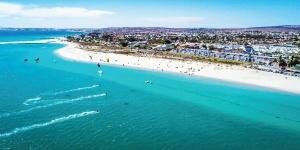
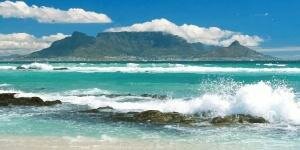
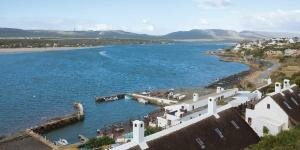
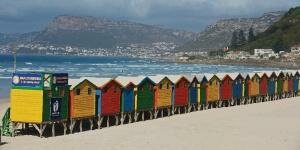
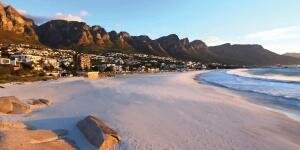
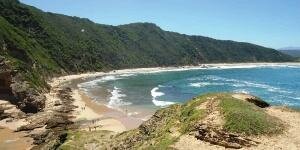
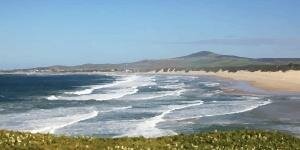
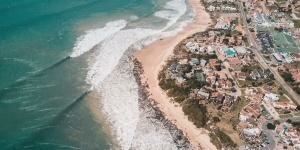
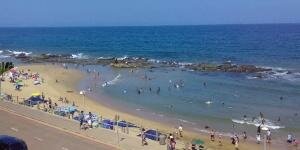

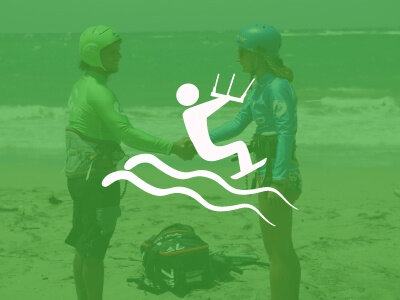
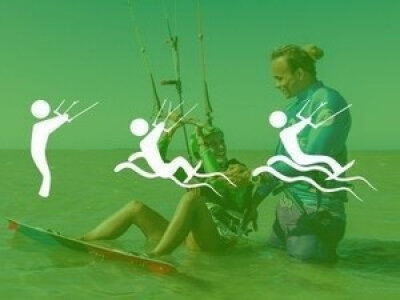
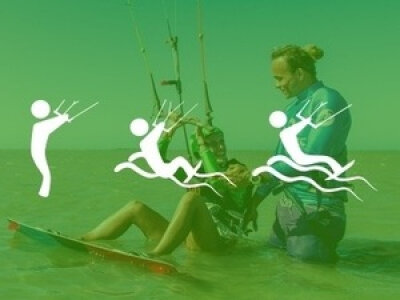
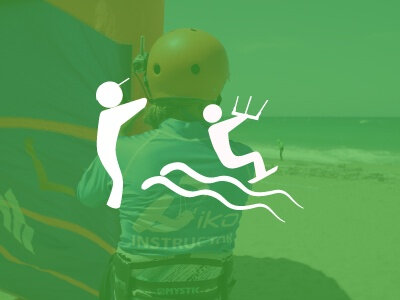
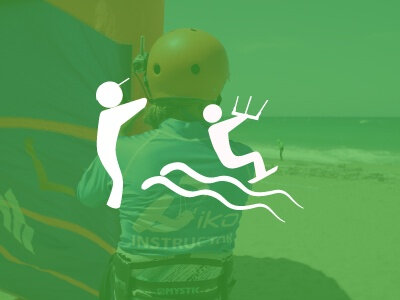

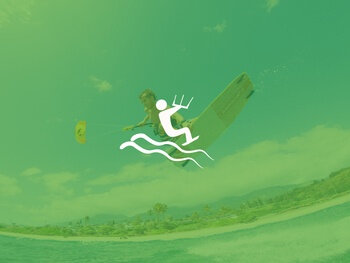
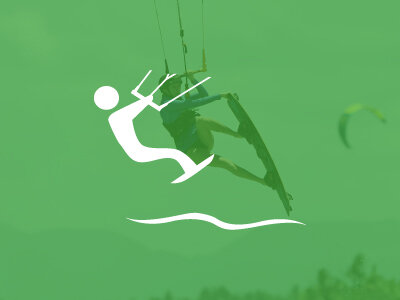
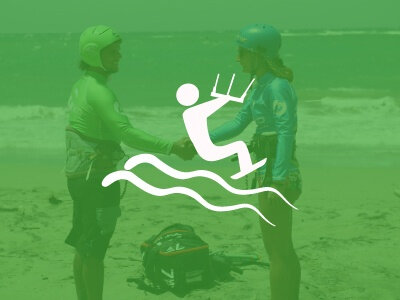
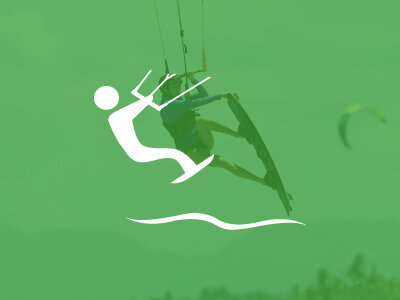
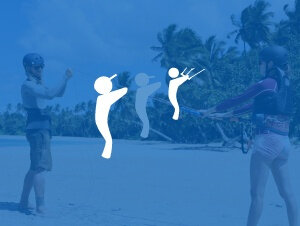
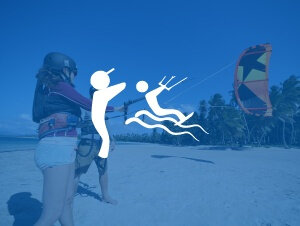
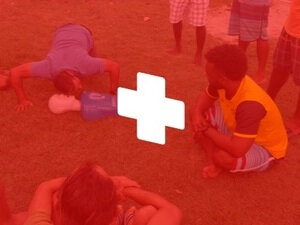
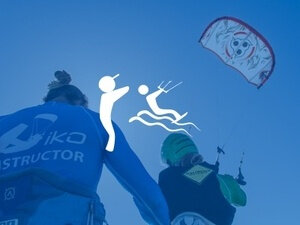
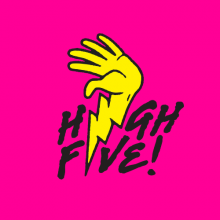

.png)

